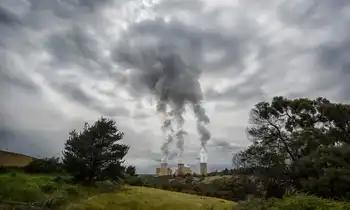Rising global coal demand seen lifting U.S. mining companies
Strong international demand appears likely to help tighten the U.S. coal market by the middle of next year, according to market participants.
A key driver of this demand has been China's emergence as a net importer of coal in 2007.
The country is firing up a new coal-burning plant each week, and this growing appetite has devoured coal from Australia, South Africa and other suppliers that would normally ship to European markets. Some European consumers have therefore turned to U.S. suppliers to replace coal that is now too expensive to ship all the way from Asia.
"In July, China was a net exporter, but that's unlikely to last," said Jim Thompson, publisher of Coal & Energy Price Report. "Generally they'll be a net importer but sporadically they could be a net exporter."
That's the reverse of China's role in the global markets before 2007, when the country occasionally imported coal but was usually a net exporter.
The first beneficiaries of this trend will be companies that produce coal used for making steel. Prices for this type of coal have spiked to around $150 per metric ton for coal sold on the U.S. East Coast, Thompson said. The temporary shutdown of two major mines that produce steelmaking coal — Pinnacle, owned by Cleveland Cliffs, and Buchanan, owned by Consol Energy Inc. — has added further tightness to the market.
Alpha Natural Resources Inc., based in Abingdon, Va., stands to benefit most from this trend, said Jeremy Sussman, a coal sector analyst at Natexis Bleichroeder. The company is the largest U.S. exporter of metallurgical coal, and it has plenty of production that isn't locked into contracts at lower prices.
"While I do expect Alpha's costs to rise, the benefit of higher coal prices will far outweigh the cost increases," Sussman said. "Strong metallurgical coal pricing is the first catalyst we're going to see before the end of the year."
Other U.S. coal producers won't benefit immediately. Most of the coal sold domestically is used to generate electricity, not make steel. But if metallurgical coal demand is strong, producers will divert their production for sale to steel companies instead of selling it to power companies.
Producers are even exporting more power plant coal this year than last. The industry is on pace to export as much as 58 million tons of both power plant and steelmaking coal in 2007, up from 49 million tons in 2006. That adds tightness to the market for power plant coal and should help cut large stockpiles that utilities have amassed since 2006.
"It's not affecting us yet," said Deborah Rouse, manager of coal and transportation at Southern Co., the giant power company that's one of the largest U.S. coal consumers. "It's not affecting the U.S. market yet because of the inventory hangover."
"If the export demand continues, and domestic demand picks back up, then I think that just has upwards price pressure on the market," she added.
"The domestic utility story isn't likely to be ripe for a few more months yet," said Thompson of Coal & Energy Price Report.
Obstacles still remain, however, for producers, particularly those located in central Appalachia, a region spanning southern West Virginia, eastern Kentucky and southwestern Virginia.
Much of the production in the region comes from smaller underground mines. These producers must cope with new worker safety laws that will significantly raise costs. Some will probably stop producing with prices too low to cover their costs.
But this leaves more market share for companies that can withstand the cost pressures. Additional supply may leave the market when a tax credit producers get for spraying coal with a synthetic chemical expires at the end of the year.
"There's a big question mark on how much central Appalachian production will drop out of the market because of that," said John Hanou, a coal market analyst at the energy research firm Hill & Associates.
Massey Energy Co., the largest central Appalachian producer, won't benefit as much as Alpha Natural Resources, said Sussman of Natixis Bleichroeder, because the company has already sold much of its production at prices below the current market. Central Appalachian coal shipped on the CSX rail line has traded at $42 for several months, up slightly from $40 per ton at the beginning of the year.
Related News

Africa must quadruple power investment to supply electricity for all, IEA says
JOHANNESBURG - African countries will need to quadruple their rate of investment in their power sectors for the next two decades to bring reliable electricity to all Africans, an International Energy Agency (IEA) study published on Friday said.
If African countries continue on their policy trajectories, 530 million Africans will still lack electricity in 2030, the IEA report said. It said bringing reliable electricity to all Africans would require annual investment of around $120 billion.
“We’re talking about 2.5% of GDP that should go into the power sector,” Laura Cozzi, the IEA’s Chief Energy Modeller, told journalists ahead of the report’s launch.…





